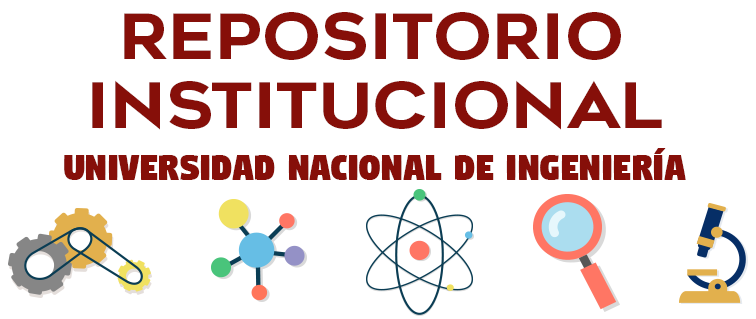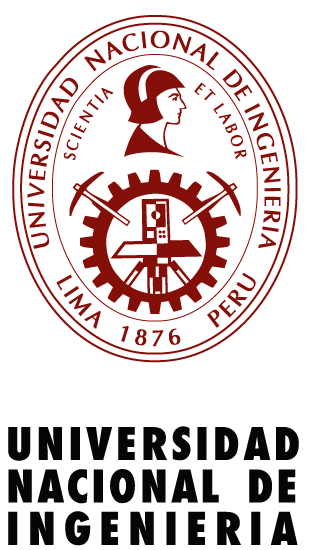Por favor, use este identificador para citar o enlazar este ítem:
http://hdl.handle.net/20.500.14076/27973| Título : | Análisis de factibilidad de un proyecto inmobiliario relacionado a un predio deteriorado por su antigüedad, distrito de San Martín de Porres |
| Autor : | Allasi Gonzales, Rafael Alfredo |
| Asesor : | Ramírez Erazo, Alberto Julio |
| Palabras clave : | Inversión inmobiliaria;Estudios de factibilidad;Gestión inmobiliaria;San Martín de Porres |
| Fecha de publicación : | 2024 |
| Editorial : | Universidad Nacional de Ingeniería |
| Resumen : | El presente trabajo de investigación analiza si es factible el desarrollo de un proyecto multifamiliar de 5 pisos más azotea y un nivel de semisótano, para una empresa inmobiliaria que recién ingresa al mercado y que propone asociarse con el propietario de un terreno sobre el cual existe una edificación en pésimas condiciones y así poder aportar con la reducción de la brecha habitacional existente. Los temas desarrollados se resumen a continuación.
El capítulo I, presenta una breve introducción donde se muestran los antecedentes de la investigación, la realidad problemática, los objetivos y la metodología que se usará para desarrollar la tesis.
El capítulo II, desarrolla el marco teórico para que se puedan aclarar algunos conceptos y metodologías que se utilizarán a lo largo de la tesis.
El capítulo III, analiza la situación actual de la economía a nivel global, local y proyecciones hasta el 2026 de acuerdo a la información de fuentes nacionales e internacionales, haciendo énfasis en el análisis de la inflación ya que afecta directamente a las tasas de interés. Por otro lado, el estudio de mercado (oferta, demanda y competencia), determina las características más importantes que debe poseer el producto. Finalmente, basándose en los parámetros de segmentación psicográfica, geográfica y por nivel de ingresos, se obtiene el perfil del cliente meta.
El capítulo IV muestra el desarrollo de la tasación comercial del inmueble según el método de comparación de mercado y considerando únicamente el valor que aporta el terreno, debido a que la construcción es muy antigua y no se encuentra en buen estado. Por otra parte, también se establecen las negociaciones para que se forme una sociedad entre el propietario y la inmobiliaria, así ambos contribuyan y participen de las utilidades del proyecto. El pacto consiste en que el dueño aporte el terreno; y la empresa inmobiliaria, la gestión y todos los gastos que se puedan incurrir en el desarrollo del proyecto. Las ganancias producto del negocio se repartirán en forma dineraria y en especias (m2 de construcción), tal como se acuerda en el contrato de asociación en participación.
El Capítulo V presenta la propuesta arquitectónica en función a los resultados obtenidos en el estudio de mercado y al reglamento especial que aplica para vivienda sociales, verificando que el diseño cumple con los parámetros mínimos exigidos por la municipalidad. Luego, en el análisis de factibilidad técnica se determinar que sí es posible ejecutar el proyecto debido a que se cumplen con todos los requerimientos técnicos. Finalmente, en el análisis económico y financiero, se elabora la estructura de egresos e ingresos, con ello se desarrollan los flujos de caja sobre el cual se obtienen los indicadores financieros (VAN = 98,238 y TIR = 85% anual, considerando un costo de oportunidad anual del 20%), resultandos favorables para el inversionista y finalmente se determina una rentabilidad de 76.23% sobre la inversión.
En conclusión, la ejecución de un proyecto inmobiliario de 5 pisos más azotea y semisótano, bajo una asociación en participación entre el promotor inmobiliario y el propietario del terreno, es viable técnica, económica y financieramente. Por un lado, el empresario se ahorra la compra del terreno y por ende su inversión inicial se reduce considerablemente, obteniendo una mejor rentabilidad. Por el otro, el dueño del terreno obtiene un departamento para vivir, otro para alquilar y un monto dinerario adicional producto de las utilidades del proyecto; y finalmente, se genera mayor oferta de viviendas sociales acorde al segmento sobre. The present research work analyzes whether the development of a multifamily project with 5 floors plus a roof terrace and a semi-basement level is viable, for a real estate company that has just entered the market and that proposes to associate with the owner of the land, on which there is a building in terrible conditions. The themes developed are summarized below. Chapter I presents a brief introduction showing the background of the research, the problematic reality, the objectives and the methodology that will be used to develop the thesis. Chapter II develops the theoretical framework so that some concepts and methodologies that will be used throughout the thesis can be clarified. Chapter III analyzes the current economic situation at a global and local level and projections until 2026 according to information from national and international sources, emphasizing the analysis of inflation since it directly affects interest rates. On the other hand, the market study (supply, demand and competition) determines the most important characteristics that the product must have. Finally, based on the psychological, geographic and income segmentation parameters, the profile of the target customer is obtained. Chapter IV shows the development of the commercial appraisal of the property according to the market comparison method and considering only the value provided by the land, because the construction is very old and is not in good condition. On the other hand, negotiations will also be established to form a partnership between the owner and the real estate company, so both will contribute and participate in the profits of the project. The agreement consists of the owner providing the land; and the real estate company, the management and all expenses that may be incurred in the development of the project. The profits from the business will be distributed in cash and in kind (m2 of construction), as agreed in the joint venture contract. Chapter V presents the architectural proposal based on the results obtained in the market study and the special regulations that apply to social housing, verifying that the design complies with the minimum parameters required by the municipality. Then, in the technical feasibility analysis, it is determined that it is possible to execute the project because all the technical requirements are met. Finally, in the economic and financial analysis, the structure of expenses and income is prepared, with this the cash flows are developed on which the financial indicators are obtained (VAN = 98,238 and TIR = 85% annually, considering an opportunity cost annual of 20%), resulting in favorable results for the investor and finally a profitability of 76.23% on the investment is determined. In conclusion, the execution of a real estate project with 5 floors plus a roof terrace and basement, under a joint venture between the real estate developer and the owner of the land, is technically, economically and financially viable. On the one hand, the businessman saves on purchasing the land and therefore his initial investment is considerably reduced, obtaining a better return. And on the other hand, the owner of the land obtains an apartment to live in, another to rent, and an additional monetary amount resulting from the project's profit. |
| URI : | http://hdl.handle.net/20.500.14076/27973 |
| Derechos: | info:eu-repo/semantics/openAccess |
| Aparece en las colecciones: | Ingeniería Civil |
Ficheros en este ítem:
| Fichero | Descripción | Tamaño | Formato | |
|---|---|---|---|---|
| allasi_gr.pdf | 4,62 MB | Adobe PDF | Visualizar/Abrir | |
| allasi_gr(acta).pdf | 837,56 kB | Adobe PDF | Visualizar/Abrir | |
| carta_de_autorización.pdf | 521,67 kB | Adobe PDF | Visualizar/Abrir | |
| informe_de_similitud.pdf | 1,47 MB | Adobe PDF | Visualizar/Abrir |
Este ítem está sujeto a una licencia Creative Commons Licencia Creative Commons

Indexado por:



